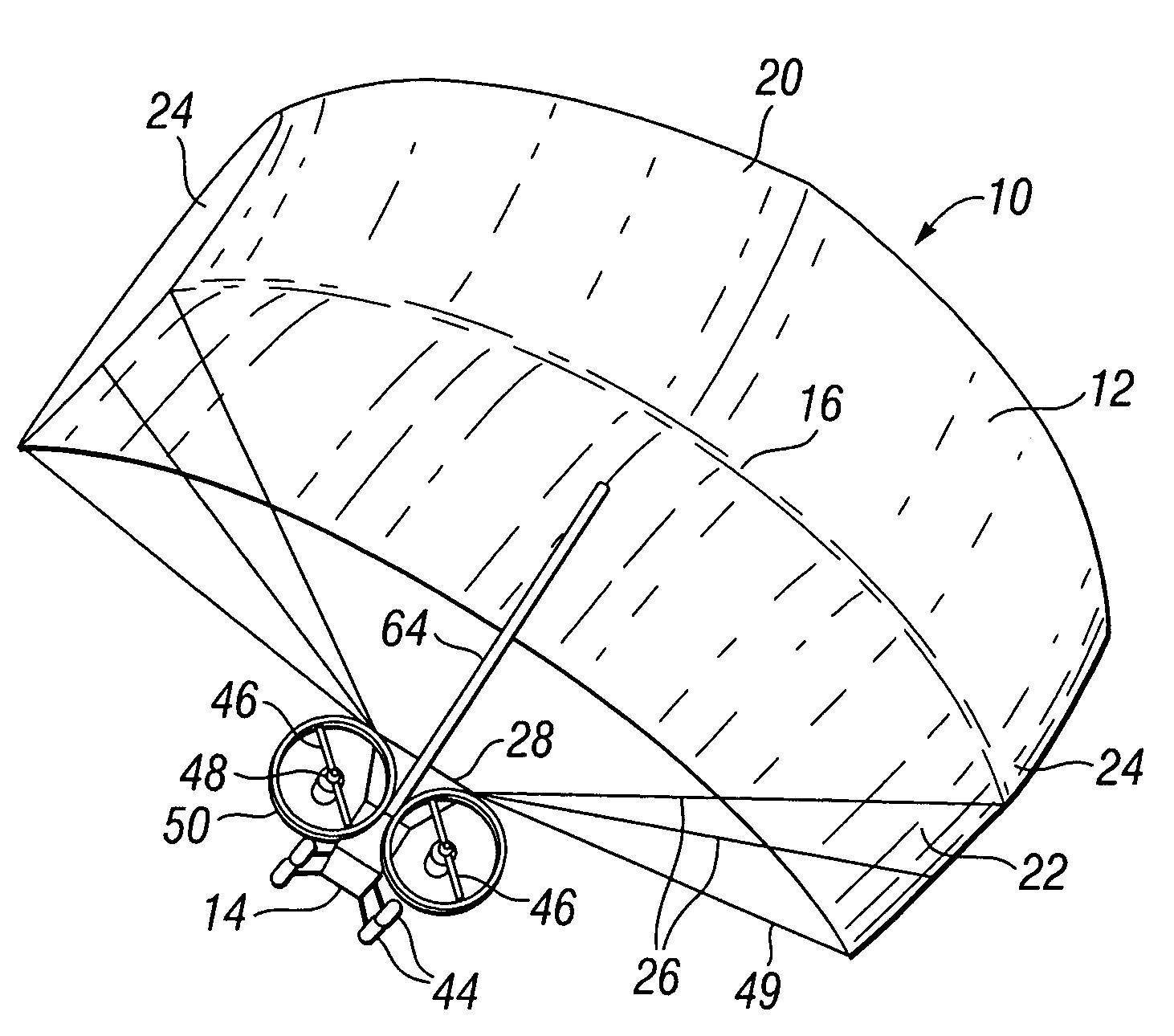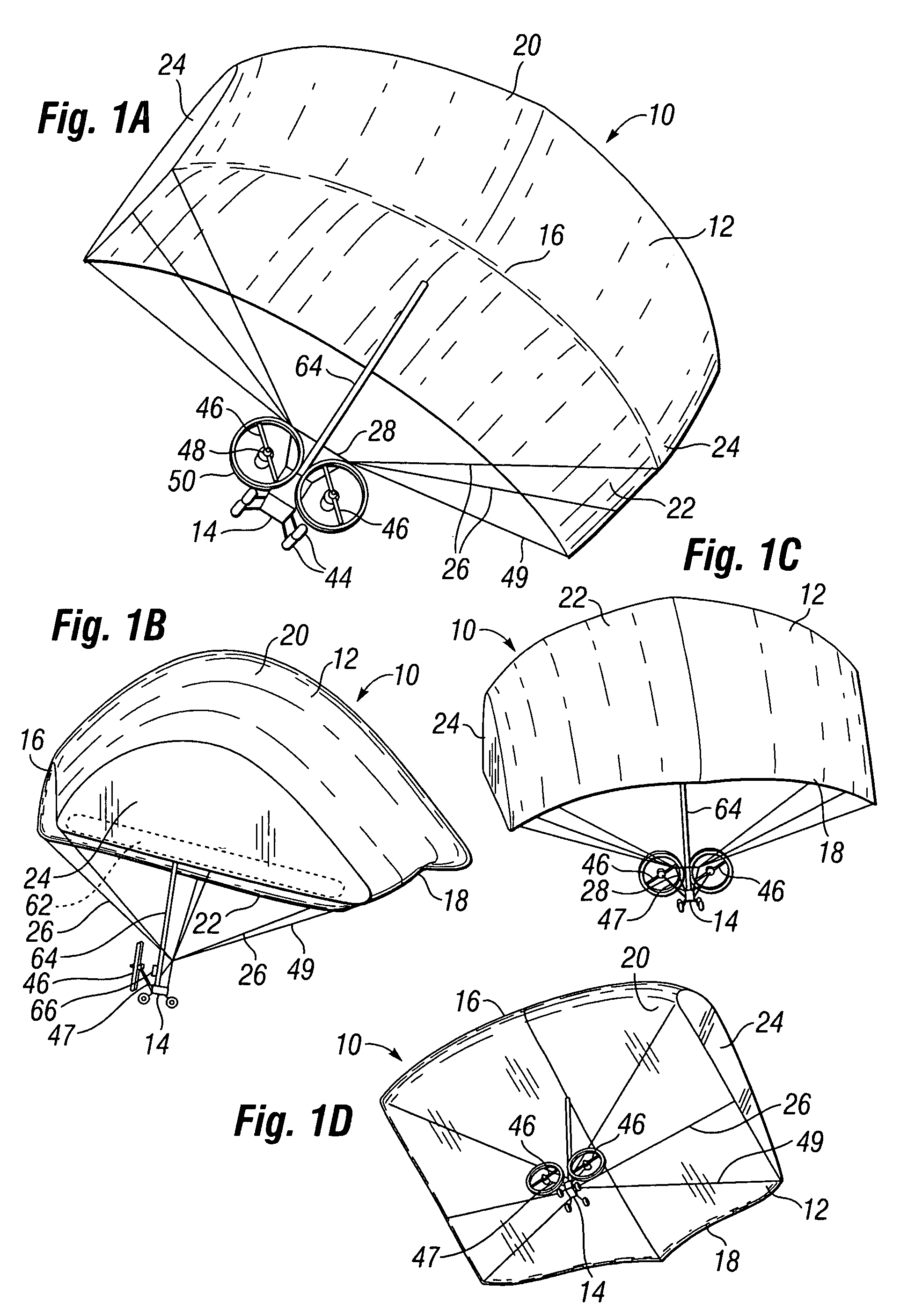Inflatable wing flight vehicle
a technology of inflatable wings and flight vehicles, which is applied in the field of flight vehicles, can solve the problems of limited maneuverability and control problems of blimps, and achieve the effect of thin atmosphere and improved lift characteristics
- Summary
- Abstract
- Description
- Claims
- Application Information
AI Technical Summary
Benefits of technology
Problems solved by technology
Method used
Image
Examples
Embodiment Construction
[0039]With reference to FIGS. 1A-1D, an air vehicle 10 according to the invention has an inflatable airfoil 12 secured to a base unit 14. The airfoil 12 has a leading edge 16, trailing edge 18, top 20, bottom 22, and sides 24. The airfoil 12 is secured to the base unit 14 via connections such as canopy lines 26 and risers 28.
[0040]The base unit 14, which is also depicted in FIG. 3 in greater detail, has a front 30, back 32, bottom 34, top 36, and sides 40, and includes a main body 42, wheels 44, propellers 46, motor 48, optional propeller cage or shroud 50, solar panels 52, batteries 54, scientific payloads 56, drill 58, and communication antenna 60. The wheels 44 may be inflatable wheels, which could be inflated with surrounding atmosphere, residual gases left over from the manufacturing and assembly process on Earth, and / or other gases such as the lifting gas used for the airfoil, and may be inflated prior to entering the Martian atmosphere, during atmospheric entry, or after such...
PUM
 Login to View More
Login to View More Abstract
Description
Claims
Application Information
 Login to View More
Login to View More - R&D
- Intellectual Property
- Life Sciences
- Materials
- Tech Scout
- Unparalleled Data Quality
- Higher Quality Content
- 60% Fewer Hallucinations
Browse by: Latest US Patents, China's latest patents, Technical Efficacy Thesaurus, Application Domain, Technology Topic, Popular Technical Reports.
© 2025 PatSnap. All rights reserved.Legal|Privacy policy|Modern Slavery Act Transparency Statement|Sitemap|About US| Contact US: help@patsnap.com



